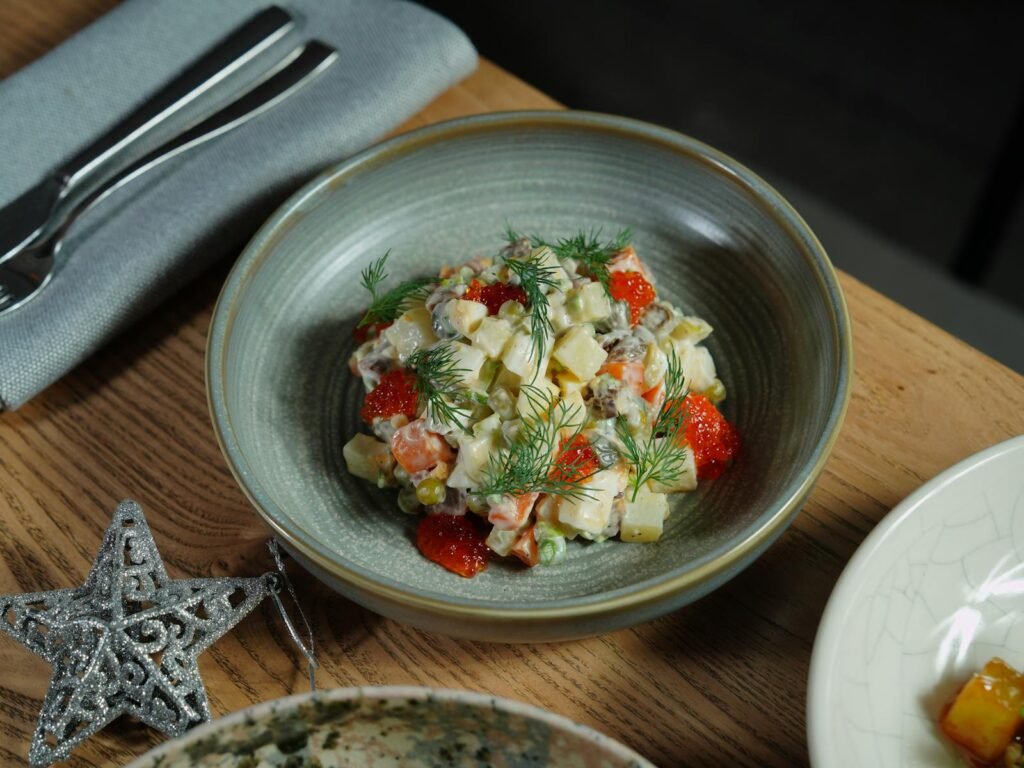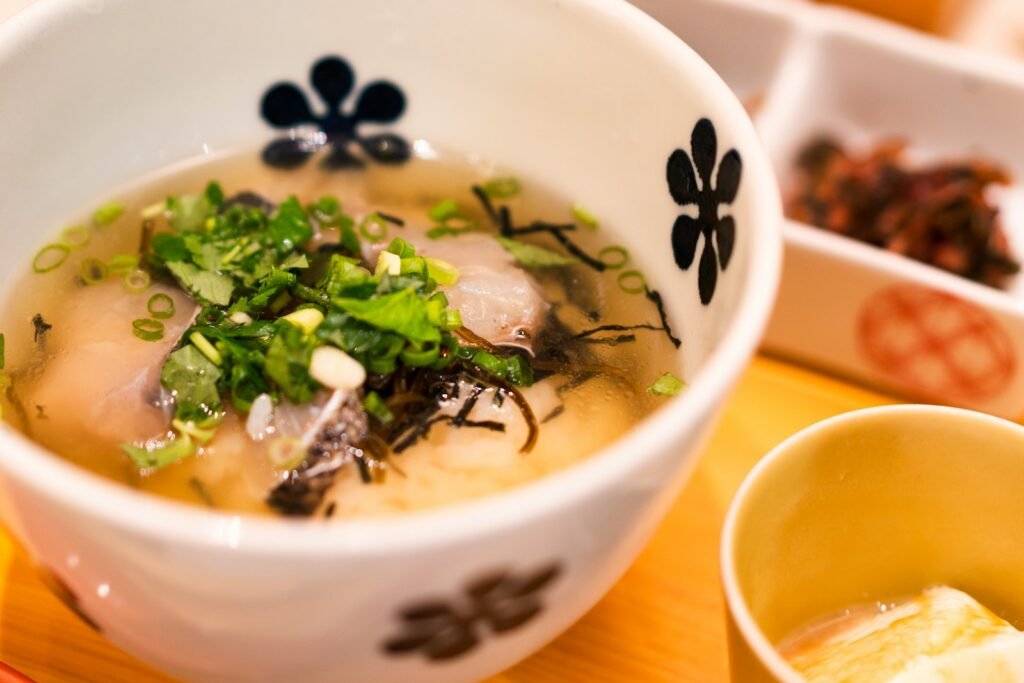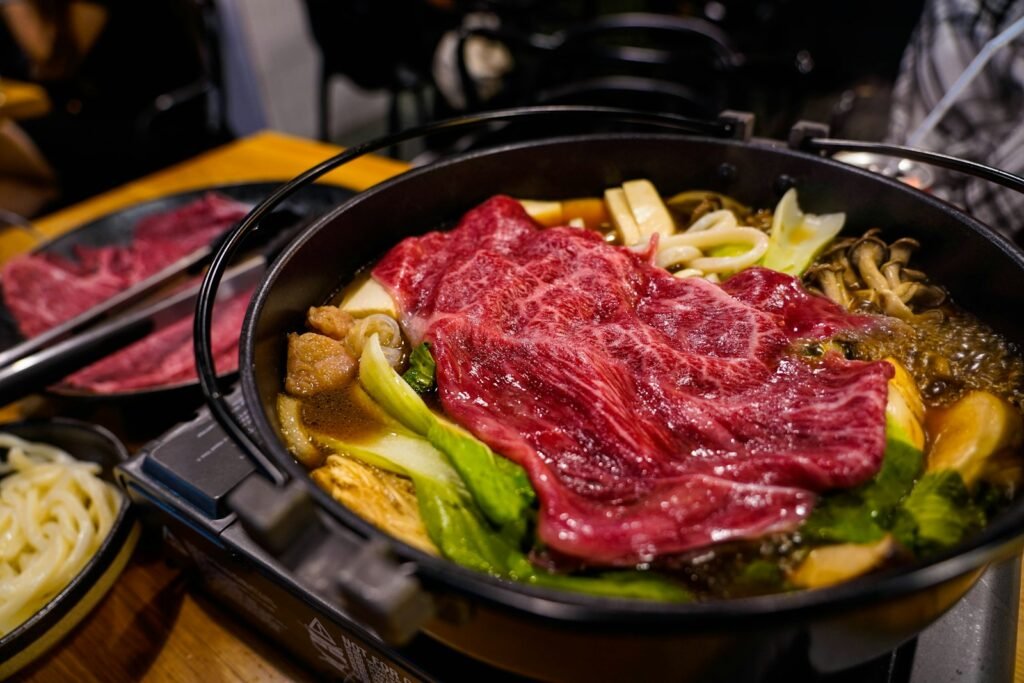
Ingredients you’ll need
When it comes to creating a mouthwatering Japanese potato salad with a twist, the key is in selecting the freshest and highest quality ingredients. Start with some Yukon Gold potats, known for their creamy texture, which will provide the perfect base for your salad. Don’t underestimate the importance of using the right potats- after all, as the great Julia Child once said, “You don’t have to cook fancy or complicated masterpieces- just good food from fresh ingredients.”
Next, you’ll need a handful of crisp and vibrant vegetables to add a delightful crunch to your salad. Opt for some crunchy cucumbers, colorful carrots, and refreshing scallions to bring a burst of freshness and texture to each bite. As the famous Japanese proverb goes, “Hito wa shinobi no monogoto yamai,” which translates to “too much cunning is not wise,” reminding us that simplicity and freshness are key in creating a flavorful and balanced dish. So, gather your ingredients and let’s embark on a culinary adventure infused with Japanese flair!
How to cook the potats just right
When it comes to cooking the perfect potats for your Japanese-inspired dish, it’s all about finding that delicate balance between tender and firm. The key is to not overcook them, as Nobu Matsuhisa famously said, “Cooking is like painting or writing a song. Just as there are only so many notes or colors, there are only so many flavors – it’s how you combine them that sets you apart.” So, start by boiling your potats in well-salted water until they are just fork-tender, making sure not to let them go mushy.
Once your potats are cooked to perfection, give them a quick shock in ice water to stop the cooking process and help them retain their shape. As the renowned chef Nobu advises, “I search for perfection in food, but perfection doesn’t exist. Food is about sharing and enjoyment.” This quick tip will ensure that your potats maintain their texture and are ready to absorb all the delicious flavors of your dish. Remember, cooking is an art form, so don’t be afraid to experiment and make it your own!
The secret ingredient: Kewpie Mayo
Who would have thought that a humble condiment like mayo could hold the key to unlocking a whole new world of flavor in your dishes? Enter Kewpie Mayo, the unsung hero of Japanese cuisine that adds a creamy richness and umami kick like no other. As a fellow lover of Japanese food, I can attest to the magical transformation that a dollop of Kewpie Mayo can bring to even the simplest of dishes. It’s like a flavor bomb that explodes in your mouth, leaving you craving for more.
Kewpie Mayo has been a staple in Japanese households for over 90 years, known for its signature smooth texture and slightly tangy taste. As the renowned chef Nobu Matsuhisa once said, “Mayonnaise is a must in Japanese kitchens.” And he couldn’t be more right. The secret lies in the combination of egg yolks, vinegar, and umami-rich Kombu seaweed extract, creating a velvety sauce that elevates everything from sushi rolls to grilled meats. So next time you’re whipping up a dish, don’t shy away from incorporating this heavenly condiment – your taste buds will thank you.
Adding a Japanese twist with soy sauce
When it comes to infusing a dish with a touch of Japan, soy sauce is the OG MVP. The umami-rich, salty goodness of soy sauce can take your culinary creations from mundane to magnificent with just a drizzle or a splash. As renowned chef Nobu Matsuhisa once said, “Soy sauce is the king of the Japanese pantry; it adds depth and character to any dish.” And I couldn’t agree more – it’s like a flavor bomb in a tiny bottle!
Soy sauce not only brings that savory kick we all love, but it also elevates the overall taste profile of a dish. Whether you’re marinating meats, stir-frying veggies, or drizzling it over sushi, soy sauce has the power to transform ordinary ingredients into an extraordinary culinary experience. As you pour that soy sauce into your cooking pot, remember the words of Japanese pt Masaoka Shiki, “Soy sauce is a gift from the gods to heighten the taste of food.” So go ahead, embrace the magic of soy sauce and let your taste buds embark on a flavorful journey to Japan!
Enhancing the flavor with rice vinegar
Rice vinegar, ah, the unsung hero of Japanese cuisine. It’s like that quiet friend who always adds depth to every conversation without making a big fuss about it. This tangy elixir isn’t just about adding a hit of acidity; it’s about elevating flavors to a whole new level. As the legendary chef Masaharu Morimoto once said, “Rice vinegar is like a symphony conductor it brings all the flavors together in perfect harmony.”
In Japan, rice vinegar has been cherished for centuries, not just for its taste but also for its health benefits. Rich in antioxidants and known for aiding digestion, this humble ingredient packs a nutritional punch that complements its culinary prowess. Whether you’re pickling vegetables, making a zesty dressing, or marinating meats, rice vinegar adds a refreshing zing that lifts dishes to a state of umami bliss. Just a splash can transform a simple dish into a culinary masterpiece that dances on your taste buds with every bite.
Incorporating crunchy textures with vegetables
One of the key elements in creating a flavorful and dynamic Japanese dish is incorporating crunchy textures with a medley of vibrant vegetables. Vegetables not only add color and freshness to a dish, but they also provide that satisfying crunch that keeps things interesting. As Nobu Matsuhisa wisely said, “Vegetables are a must on a diet. I suggest carrot cake, zucchini bread, and pumpkin pie.” So, let’s embrace the crunch and make our taste buds dance with delight!
When selecting vegetables for your Japanese culinary creations, opt for a variety of textures to keep your dish exciting. Think about the contrast between crispy bell peppers, juicy cherry tomats, and tender snow peas. Remember, “Good vegetables are a must cook for the balance of the meals. Vegetables play a large role in the transition to a healthier diet,” as renowned chef Jean-Georges Vongerichten emphasizes. By stir-frying or lightly pickling these vegetables, you can preserve their crunchiness while enhancing their flavors. Let the veggies take center stage and elevate your dish to new heights of deliciousness!
Balancing the creaminess with a touch of sweetness
Creaminess and sweetness, oh my! The perfect duo to make your taste buds do a happy dance. When it comes to balancing these flavors in your dishes, it’s all about finding that harmonious blend that keeps you coming back for more. As the legendary chef Julia Child once said, “The only time to eat diet food is while you’re waiting for the steak to cook.” So why not indulge a little and let creaminess and sweetness take center stage?
When creating a dish that intertwines creaminess with a touch of sweetness, it’s important to remember that subtlety is key. You want the flavors to complement each other, not overpower. As chef Thomas Keller wisely stated, “A recipe has no soul. You, as the cook, must bring soul to the recipe.” So, infuse your dish with a touch of your own creativity and passion. Let the creaminess provide that luxurious, comforting base, while the sweetness dances lightly on your palate, creating a symphony of flavors that will have you savoring every bite.
Tips for serving and presentation
Ah, the final touches to a delightful dish – serving and presentation! Remember, we eat with our eyes first, so make sure your creation looks as good as it tastes. A well-crafted plate not only pleases the taste buds but also brings a smile to the soul. Play with colors, shapes, and textures to awaken all the senses of your diners. As the famous chef Julia Child once said, “People who love to eat are always the best people.” So let your love for food shine through in your presentation.
When it comes to serving, think of it as an art form. Use elegant plating techniques to showcase the beauty of each ingredient. Arrange your potats with precision, drizzle the Kewpie Mayo with finesse, and sprinkle the soy sauce and rice vinegar like a culinary artist. As the Japanese proverb goes, “Even a wilting flower will show its beauty when it knows things are coming to an end.” So let your dish be a masterpiece that tells a story with every bite. Remember, the most important ingredient in any meal is love, so serve it generously and watch how it elevates the entire dining experience.


